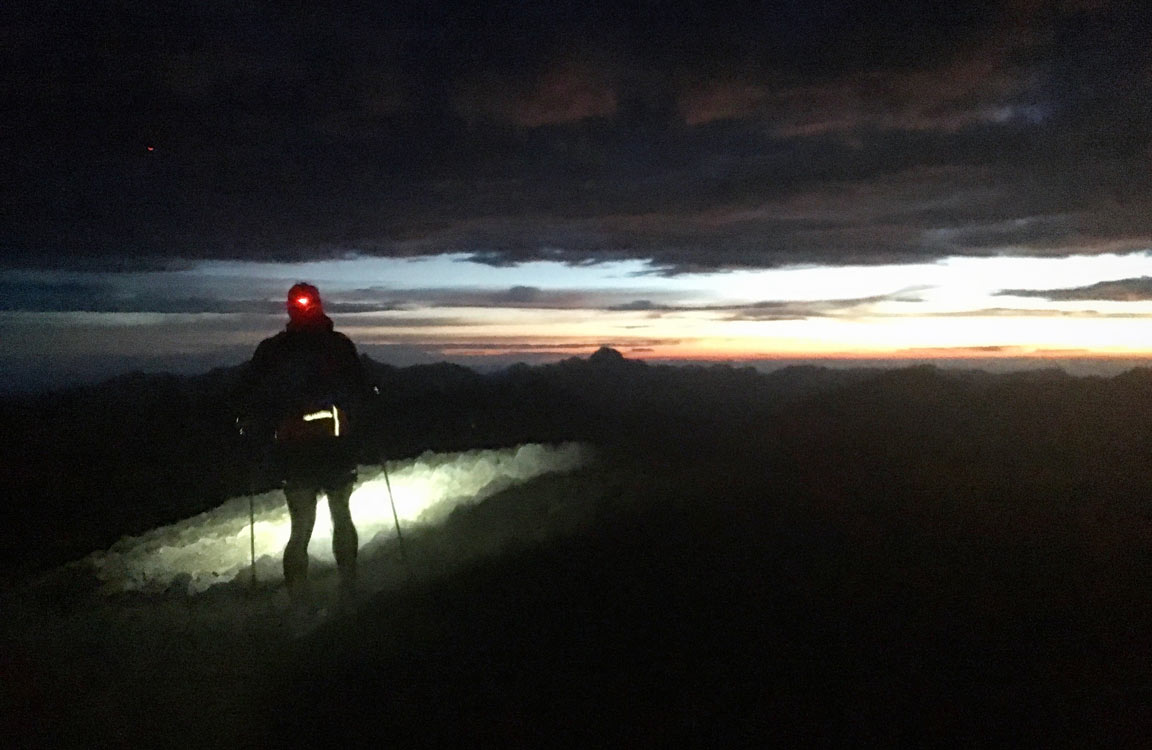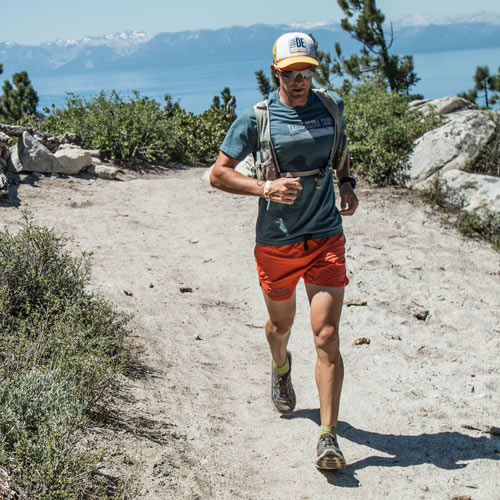
How to Get Comfortable Running at Night
By John Fitzgerald
Ultrarunning Coach
Some people love running at night and others find it intimidating, but if you’re going to be an ultrarunner you at least have to get comfortable with running in the dark. Whether you’re a beginner or an experienced ultramarathon veteran, here are some tips for making the most of the night.
Get the Right Gear for Running at Night
There are a lot of lighting options out there. The decision between which brand to buy is further complicated by whether you want a headlamp, waist belt, or handheld model. Waist belts and handheld lights shed light closer to the ground, helping you see more clearly across technical terrain. Bright headlamps are great for illuminating the trail ahead, but sometimes leave your feet in darkness.
That’s fine for non-technical areas, but can be troublesome if you need both out-front and close-in visibility. Handheld lights can also make it tricky to see what you’re doing with your hands and sometimes make it difficult to carry both a handheld water bottle and a handheld light.
The next consideration is the power source. If you prefer rechargeable batteries, you’ll still likely want a backup handlamp, and if you prefer single-use battery-powered lights, you’ll still need to carry extra batteries. You may even decide it’s worth the extra cost to get a rechargeable headlamp that also takes single-use batteries.
As Coach David Henry advises in his article about selecting a running headlamp, the amount of light you settle on will be a compromise with price and weight.
Grab a Running Partner
If you’re new to running at night, meeting up with a friend is a great way to build courage, scare off the animals, and gain extra light. If you’re leaving before sunrise, a friend also helps ensure you’ll get out of bed. An important and often overlooked benefit of night-running with a partner is that it replicates running with others during a race. You’ll be able to get a feel for how shadows are cast when someone runs behind or to the side of you.
Run at Race Time
If your goal race starts in the pre-dawn darkness, make it a point to meet at the time the race starts. This will help you practice running with a light and peeling yourself out of bed on time to fuel, hydrate, and visit the waste transfer station. And although I don’t often recommend postponing your run as late as possible during the day, if your race will go into the night, it would also be wise to start some runs late. Catch the sunset, run at dusk to get a feel for when you need to turn your lights on, and then continue into the night.
Sign Up for Night Events
Hard-earned friendships may be risked by dragging your friends from their precious beauty sleep. Fortunately, night running races are becoming more popular. Aravaipa Running hosts series of 9 night running races. Even my small home base of Helena, MT, hosts a night run. In fact, the race director organized The Moonlight over Mt. Ascension to help combat his own issues with the Sleep Monsters.
Schedule Night Runs Throughout Training
Don’t worry about when in your training plan to run at night. You don’t have to start with it or save it to the final month. Just get out in the darkness frequently enough to feel comfortable with it. If it makes you nervous or seriously affects your ability to perform, acknowledge that and start incorporating night runs earlier in your training. It’s okay to start small, with 20 or 30 minutes of running in darkness. A cool way to involve the whole family is with a backpacking trip. Instead of starting in the morning, arrive at the trailhead with only an hour of light to make it to camp 6 miles away. Trust me, they’ll love it.
► Free Ultrarunning Training Assessment Quiz
Take our free 2-minute quiz to discover how effective your training is and get recommendations for how you can improve.
Train With Race Gear at Night
Build up the duration of time you spend running in the dark so you’re able to practice fueling and wearing all your race gear. Running in the dark is one thing, but fumbling to put a sticky gel back into your back pocket without impaling yourself on a hiking pole is another. Just be sure you don’t compromise sleep in exchange for training in the dark, especially the closer you get to your event.
Enjoying This Article? Get More Free Running Training Tips
Get our coaches' best training advice, delivered straight to your inbox weekly.
Stay Safe
DO think about where to run at night. Please do NOT run at night someplace known for late night assaults. If this describes your neighborhood trail system, make it a point to travel somewhere safer. As for wildlife, most animals want nothing to do with you and being brightly-lit and noisy gives them plenty of time to avoid you.
That said, consider carrying bear spray and learning what to do if you meet up with an animal. Another good reason to travel is that if your upcoming race is on technical terrain, you’ll want to practice moving over something similar. While you’re building up the duration of your night runs, also increase the complexity of the trails you run on.
The beauty of running at night is that perception changes. Speed is warped because you can’t see objects in the distance passing by. As you get more comfortable and less trepidatious running in the dark, remember to keep your speed controlled. When race day comes, I hope you will look forward to and take comfort in the darkness. It’s when all the distractions of daylight are cast away and the world shrinks down to what you can see in your own little bubble of light.

